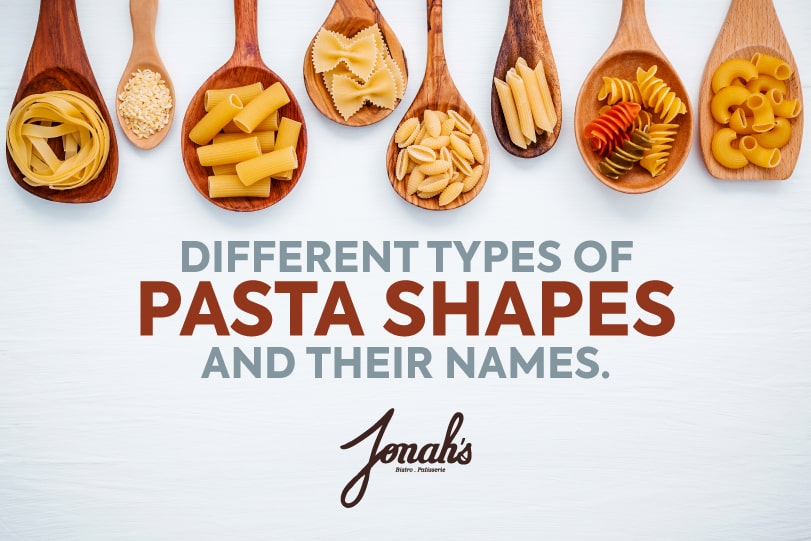The saying goes that joy is usually found in the small pleasures of life. Wouldn’t you agree that pasta is the perfect dish to validate this statement? This humble dish is an everyday staple in its native land of Italy. Its claim to fame stems from the sheer versatility and presentation potential that it brings to the table. The combinations you can mix and match with pasta types and various delectable sauces are practically limitless! No wonder, then, that pasta is consumed so widely in some countries that the consumption rate exceeds the production rate at times!
The Past Of Pasta
As a dish, pasta has been around for centuries. Back in the day, all pasta used to be handmade and carefully crafted, with the authentic Italian flavour. Now, with the advent of mass production in factories, we have pasta sold by the box to different corners of the world. Based on this classification, we can group pasta into two distinct types:
– Pasta secca (Dry Pasta)
Pasta that is produced through machinery and sold by the box. This is the pasta you see sold in your neighbourhood department stores. It comes in various shapes and sizes and is quite tasty. The catch, however, is that you can tell that it’s storebought once you’ve tasted its brother, which we’ll meet next.
– Pasta fresca (Fresh Pasta)
This type of pasta is the kind you see in restaurants and popular Italian eateries. Pasta fresca is carefully made by hand, and you can tell by the difference in taste. However, nowadays, even pasta fresca is available at most convenience stores, thanks to advancements in technology.
There’s much more to pasta than just dry and wet stuff, though. Pasta is nothing without the trademark sauces and condiments that come with them. The number of permutations and combinations that are possible with pasta dishes is virtually limitless. In this article, we’re going to be covering the different types of pasta, especially in terms of shape. You’d be surprised to know just how many delectable variants of pasta there are out there!
The Shapes Of Good Food
Let’s establish some ground rules about how pasta works from a structural perspective. The different pasta shapes come from the way that the wheat mix has been cut out and baked. The most recognisable cuts, of course, are the strips and rectangles. Does this cut ring a bell? If you’re thinking about lasagne, you’re right!
Then there’s the universally recognised form of everyone’s favourite noodles, the spaghetti. How can you go wrong with a sizable serving of spaghetti and your favourite sauce?
These are the two basic cuts of pasta that are renowned the world over. The catch is that these are considered more of a main course dish than a typical pasta serving. The cooking times for these pasta types are also slightly higher than other conventional pasta cuts. As far as sauces are concerned, lasagna and spaghetti are also marinated and baked into their dishes as opposed to regular garnishing.
With those two pasta forerunners out of the way, let’s get into the more creative cuts of pasta that you’ll see at stores and restaurants.
The Many Forms Of Pasta
Time to get into the crux of the article! Are you ready to discover the myriad shapes of quality pasta?
1. Farfalle
Translated from Italian, these are called butterflies. Though they resemble bowties more than anything, these bite-sized pasta delights go well with most tomato-based sauces. Farfalle’s cooking time is also very lenient, so it’s perfect for a quick treat!
2. Penne
This pasta type is a classic favourite among people world. Penne comes in two variants, rigate, which have lines running down, and liscie, which are smooth. Both types lend their flavour to a pasta dish and take around 6-7 minutes to cook properly. Experiment with this delectable pasta today!
3. Ravioli
This type is one of the more filling pasta variants out there. Their claim to fame is the signature stuffing that goes inside, which is usually a cheese or lobster filling. Because ravioli are stuffed, they have to be cooked a little longer to retain the flavour. Ravioli is best paired with mild sauces because they bring so much of their flavour.
4. Fusilli
Who doesn’t love a set of tasty ribbons in their pasta? Fusilli is a classic selection of pasta that somehow feels more filling than its brothers. The length of the fusilli varies depending on how the baker likes it. Another awesome thing about fusilli is that they are excellent at retaining the sauce within their folds, which is why they taste so rich!
5. Tagliatelle
Translated, these mean “cut strips”. These are flatter than spaghetti and a tad wider. The best part about this pasta is that it is completely smooth, lending to the added taste. You may find yourself having to add more sauce to this pasta, as it can be difficult for the sauce to garnish the smooth ribbons. Tagliatelle are quite filling when you pair them with the right sauce!
6. Rigatoni
These pasta types are a popular pick because they are very forgiving with their cooking time. They are sold in all sizes from small to extra large. Another variation of rigatoni usually includes “striped” and “smooth” variants. They’re easy to eat with a fork too!
7. Conchiglie
The name means shells, which is the shape this pasta takes after. The added benefit of this pasta shape is that is can hold a large amount of sauce inside its “shell”. This feature contributes to the succulent taste that we have come to associate so fondly with pasta. Like most other pasta shapes, this shell-shaped offering also comes sold by the box, in different sizes.
8. Good Pasta, Good Times
Pasta is a delightful dish no matter the season. The different shapes and sauces you can experiment with are what lend this Italian dish its X-factor. Every pasta shape has its own story and culinary touch to offer. The question is, which ones will you like the most? Tell us below about the best pasta dishes you’ve ever had!



